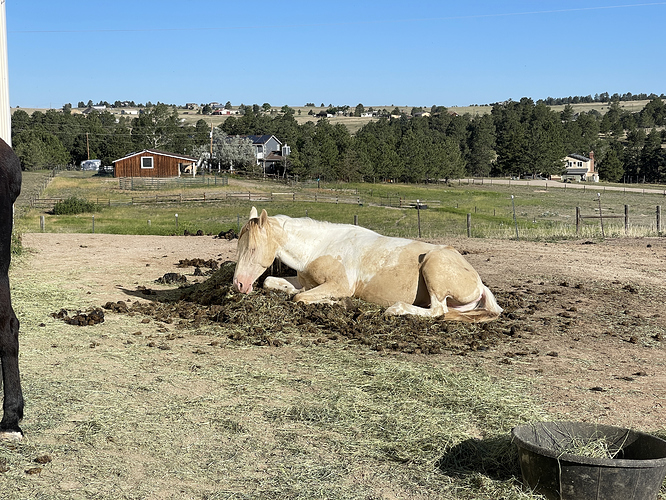Some take the definition of lameness literally.
Lame / Unsound:
Any abnormal deviation in the movement or action of a horse
So when they see a horse with abnormal deviation in the typical movement subset (WTC), they’ll assume it’s lame. It might be gaiting, it might not. Sometimes gaiting is a symptom of lameness. Sometimes it’s a derived characteristic from intentional breeding.
Assessing lameness in a gaited horse is a specialty. The typical symptoms of lameness, like a headbob, stilted gait, shuffle, braced neck can all overlap with desired gait mechanisms in a gaited horse. And worse, in some gaited breeds, these characteristics suppress what might otherwise be an obvious headbob or lameness.
Even in my own gaited horses from time to time I’ve stopped and squinted at them for a moment… Is it…? Is it not…? It’s really a world-class skill and anyone who has a vet familiar with lameness diagnostics in a gaited horse is truly lucky. You can’t even rig them up with a lameness locator, that’s how different their gaits are.
I grew up close to a gaited horse community and one of the horses I rode the longest was a (gaited) standardbred. She was an interesting choice for a H/J barn but I do remember getting a few year end medals with her at local shows. One class we were excused as the judge thought she was lame. At the time I felt cheated, but in hindsight horse welfare is paramount and I do wonder if the judge was right. This mare was not anyone’s definition of pretty, but she was honest, kind, and took care of her kids. That was my first taste of Standardbreds and I’ve come to really treasure the breed for the niche they fulfill as multi-talented, honest horses for the average ammy.
Not directed in any way at you OP - I’m part of a Standardbred group on FB. I cannot tell you how many people post videos of their dressage tests and being rung out of the ring halfway through. Sometimes I feel for the rider, but mostly after watching these videos I feel for the horse and the judge. Many people cannot honestly see a lameness in a horse, much less a gaited one, and they write off gait abnormality as a mechanism of being gaited versus pathology in the horse.

 ) required for country English pleasure/English pleasure - walk, trot, strong trot, canter, and hand gallop?
) required for country English pleasure/English pleasure - walk, trot, strong trot, canter, and hand gallop? ] in my avatar was the only one!
] in my avatar was the only one! 



 I rode my 1st 2 TWHs in my 1985 Stubben Porto’s A/P (but tended toward Dressage - deep seat, longer flap).
I rode my 1st 2 TWHs in my 1985 Stubben Porto’s A/P (but tended toward Dressage - deep seat, longer flap).
